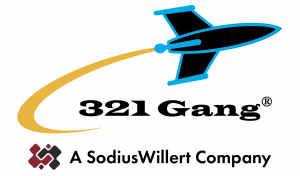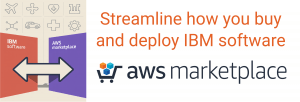Capacity Planning in an Agile World: Balancing Predictability and Responsiveness with Agile Planning Tools
The rise of Agile methodologies has significantly impacted software development practices. While Agile prioritizes adaptability and responsiveness to customer feedback, the challenge of ensuring adequate resources and maintaining project stability remains. This white paper explores strategies for effective capacity planning in a dynamic Agile environment, emphasizing the role of specialized Agile planning tools in fostering balance between predictability and responsiveness without compromising core Agile principles.
Introduction: The Tightrope Walk of Capacity Planning in Agile

Traditional capacity planning thrives on long-term plans, fractional team allocation, and well-defined timelines based upon upfront time assumptions. However, this rigid approach clashes with the core tenets of Agile development, which emphasizes iterative development cycles, embracing change, and continuous value delivery. This clash presents a significant challenge for organizations: how to achieve predictability in team member availability while maintaining the flexibility and responsiveness integral to Agile success.
This white paper explores practical strategies and introduces specialized Agile planning tools that can bridge this gap. These tools empower organizations to manage capacity effectively in an Agile environment, ensuring sufficient team members are available to continue investing in projects that drive the greatest customer value, while also allowing for the ability to pivot as necessary from less valuable projects as feedback is received based upon the value hypothesis.
Agile Capacity Planning Concepts: Embracing Change While Maintaining Stability
- Short-Term, Focused Planning:
Traditional capacity planning often extends far into the future, hindering the responsiveness inherent in Agile. In contrast, Agile capacity planning adopts a short-term horizon, typically focusing on the next few iterations or sprints. This alignment with sprint cycles allows teams to adapt to changing priorities and capacity needs as the the hypothesis is tested by releasing the minimum viable product.
- Relative Estimation:
Predicting team capacity with pinpoint accuracy is challenging in an Agile environment. Traditional time-based estimates are often imprecise and don’t account for unforeseen complexities. Agile methods address this by employing relative estimation techniques, like story points. These techniques assign relative effort values to user stories, enabling teams to estimate their velocity (the amount of work they can complete in a specific time frame based upon persistent teams) and subsequently predict capacity for future sprints. Importantly, historical data from previous sprints becomes instrumental in refining future capacity calculations and forecasts.
- Team-Based Capacity:
Effective capacity planning requires collective wisdom and input of the entire team. Involving cross-functional team members in capacity discussions fosters several benefits:
Shared ownership: Collaborative planning fosters a sense of ownership over the project’s success, encouraging team members to be actively engaged in managing and optimizing their workload.
Realistic assessments: Diverse perspectives within the team lead to more accurate assessments of potential constraints and bottlenecks.
Improved communication: Open communication during capacity discussions fosters trust and collaboration, enabling teams to anticipate and address potential roadblocks proactively.
Harnessing the Power of Agile Planning Tools: A Comparative Overview
While the core principles of Agile capacity planning remain consistent across tools, the functionalities and specific features offered by different platforms can vary. Here, we explore three prominent Agile planning tools: Apptio Targetprocess, Jira Align, and Planview AgilePlace.
- Apptio Targetprocess:
Targetprocess boasts a visual and customizable user interface, facilitating collaboration and information sharing within teams. It provides features like:
Agile boards: Enable visual task management and real-time progress tracking.
Customizable workflows: Adapt the platform to align with specific team processes and methodologies.
Dependency management: Identify and manage dependencies across work items to maintain transparency and avoid potential bottlenecks.
Reporting and analytics: Gain insights into team velocity, capacity utilization, and project performance through comprehensive reports and dashboards.
- Jira Align:
Developed by Atlassian, Jira Align is a comprehensive suite designed specifically for enterprise-level Agile implementations. It offers features like:
Strategic portfolio management: Align project goals with broader organizational strategies.
Program and portfolio planning: Facilitate planning and prioritization across multiple teams and projects.
Risk and dependency management: Proactively identify and address potential risks and manage dependencies across initiatives.
Real-time reporting and analytics: Gain insights into key performance indicators (KPIs) and make data-driven decisions throughout the development lifecycle.
- Planview AgilePlace:
Planview AgilePlace focuses on streamlining workflow management and boosting team collaboration. Its key features include:
Kanban boards: Visualize work progress and manage work in progress (WIP) limits to optimize flow and avoid bottlenecks.
Customizable dashboards: Create personalized dashboards to track progress on individual tasks, sprint goals, and overall project health.
Automated reporting: Generate reports automatically, saving time and ensuring consistency in metrics tracking.
Integrations: Integrate with other development tools, such as code repositories and issue trackers, to streamline workflows and improve data visibility.
Choosing the Right Tool
The ideal Agile planning tool will depend on your organization’s specific needs and size. Consider the following factors when making your decision:
- Team size and complexity: Smaller teams might benefit from simpler tools, while larger teams might require more robust features.
- Integration needs: Ensure the tool integrates seamlessly with your existing development tools and systems.
- Budgetary considerations: Compare pricing structures and choose a tool that aligns with your budget constraints.
- Scalability: Consider how well the tool can scale to accommodate future growth and evolving needs.
Implementing an Agile planning tool offers several key advantages:
- Improved transparency and visibility: Team members and stakeholders gain a clear understanding of capacity allocation, project progress, and potential roadblocks.
- Enhanced collaboration and communication: Tools facilitate communication and collaboration across teams, promoting better alignment and problem-solving.
- Data-driven decision-making: Real-time insights and historical data empower informed decision-making about capacity allocation, prioritization, and project adjustments.
- Increased efficiency and productivity: Streamlined workflows and automation capabilities within these tools help teams optimize their capacity and forecast.
- Reduced risk and improved predictability: Proactive identification of risks and dependencies enhances project predictability and mitigates potential roadblocks.
Conclusion: Striking the Balance
Finding the right balance between predictability and responsiveness is crucial for successful Agile project delivery. Utilizing the strategies and tools described in this white paper can empower organizations to achieve this balance. By embracing short-term, focused planning, involving teams in capacity discussions, incorporating buffers for change, and leveraging the power of Agile planning tools, organizations can ensure they have the capacity needed to deliver on their commitments while maintaining the flexibility to adapt to ever-evolving requirements.
Call to Action:
Your organization can significantly benefit from implementing effective Agile capacity planning strategies and leveraging suitable tools. We, at 321 Gang, offer expert consulting services and training programs to help you implement Agile practices, select the right planning tools, and achieve your Agile goals. Contact us today to schedule a consultation and learn how we can empower your team to embrace the power of Agile while ensuring efficient capacity management.
Questions? Reach out to us at info@321gang.com!

321 Gang | 14362 North FLW | Suite 1000 | Scottsdale, AZ 85260 | 877.820.0888 info@321gang.com
The Future is Now
We have helped our clients:
- Reduce development costs by 50-60%
- Accelerate time to market by 20-40%

